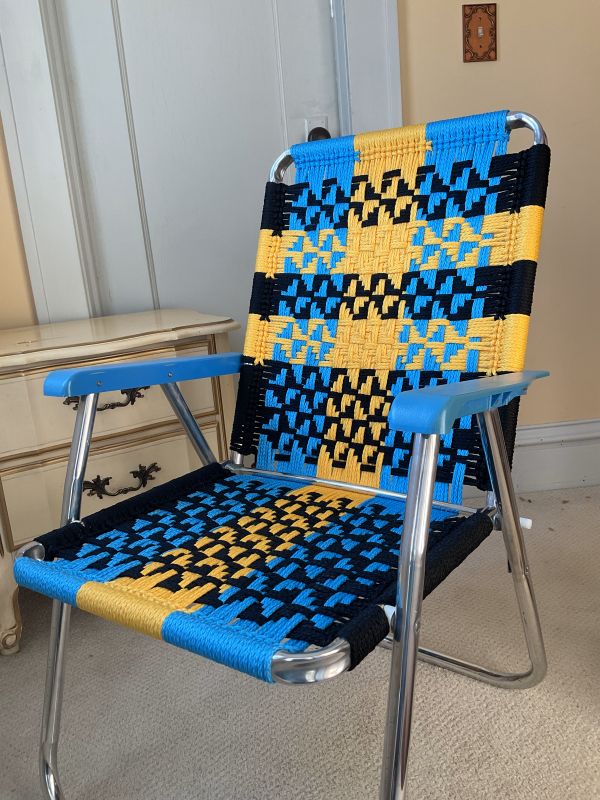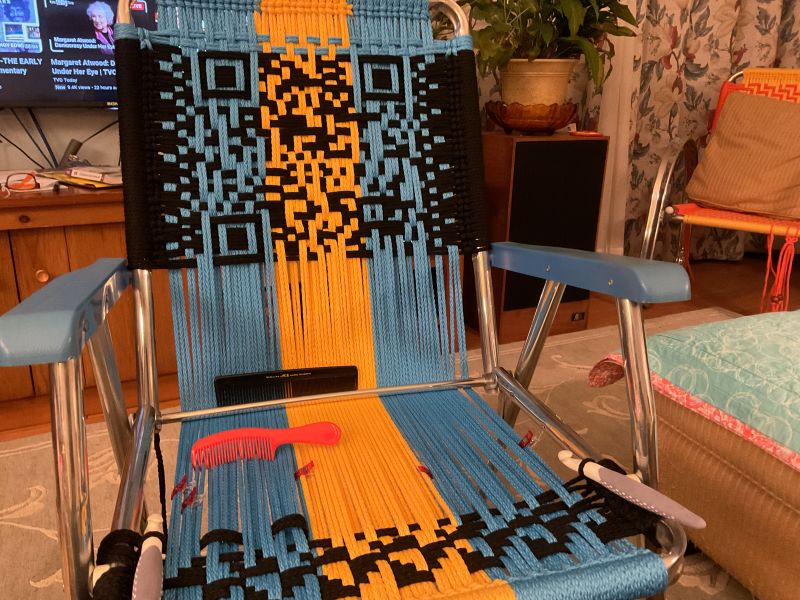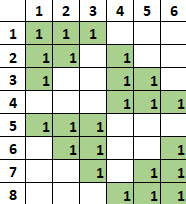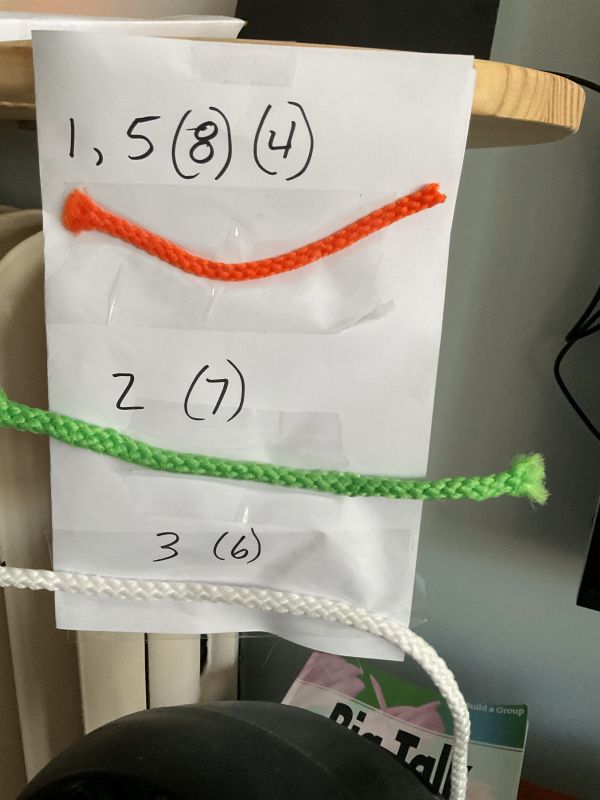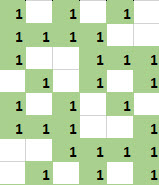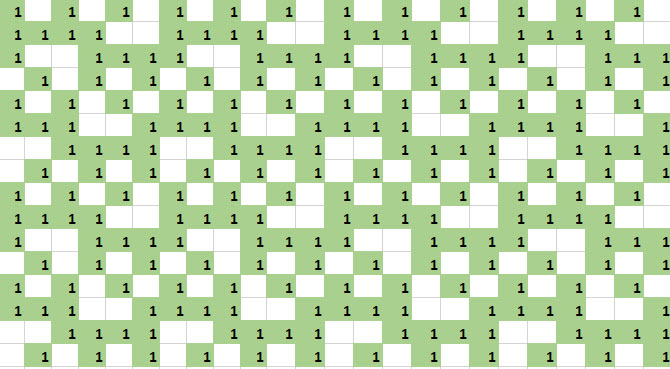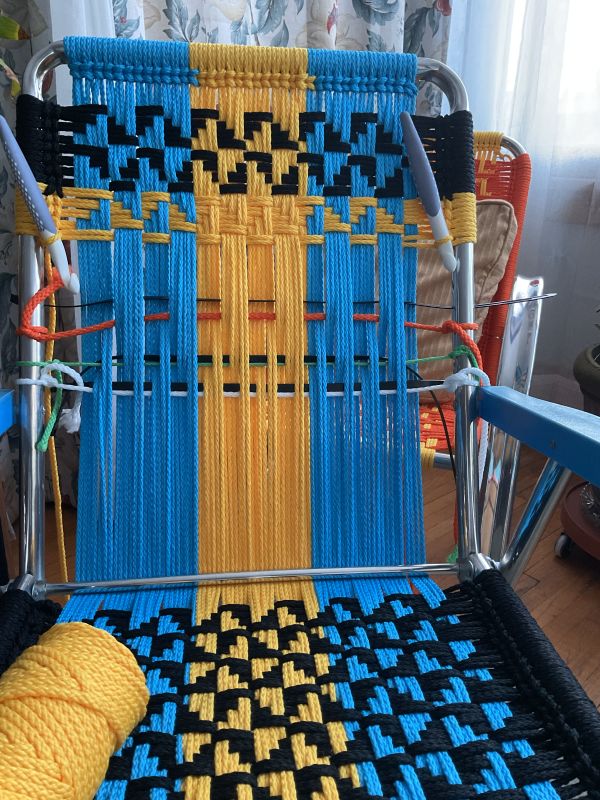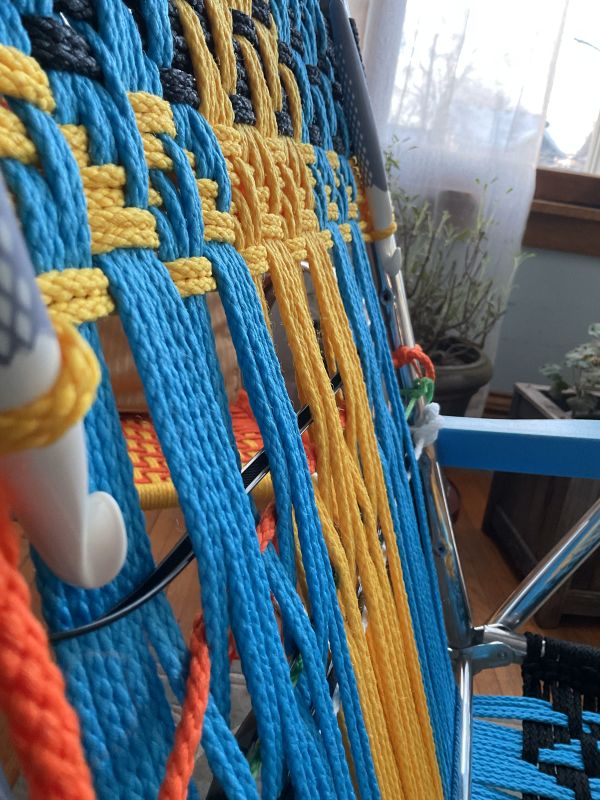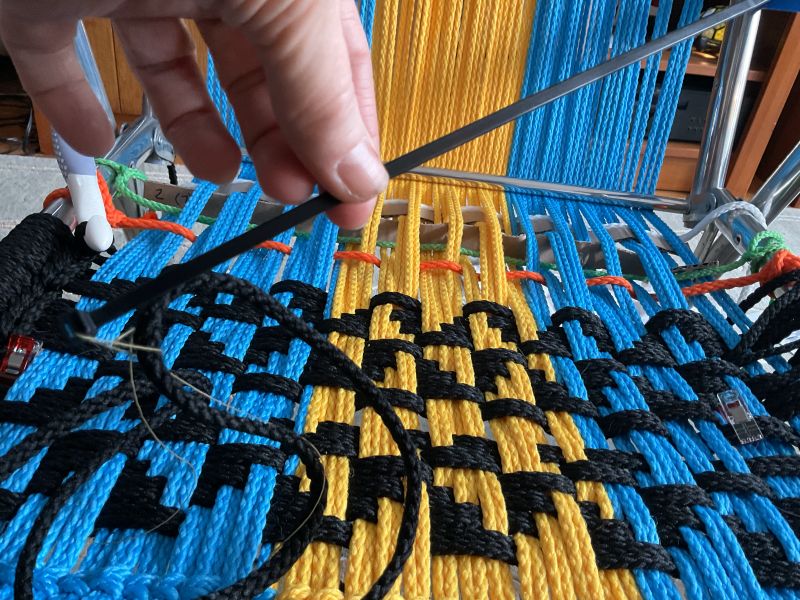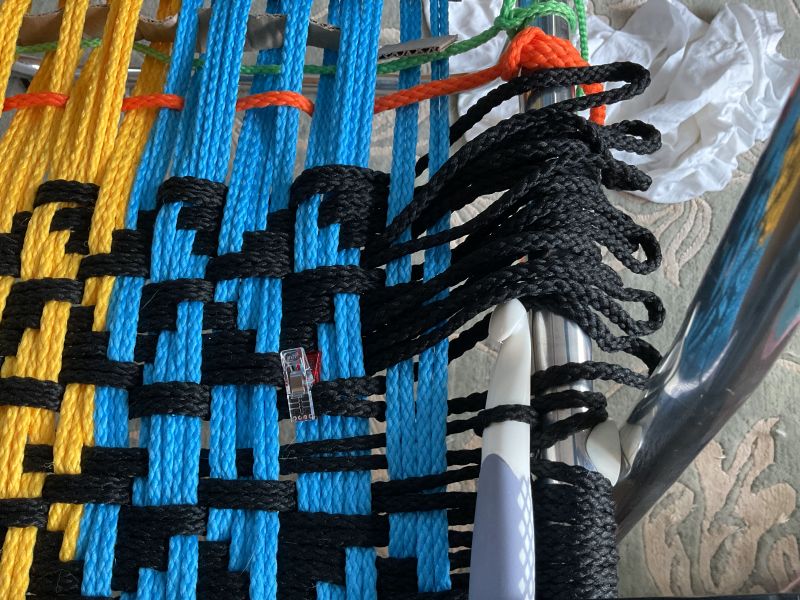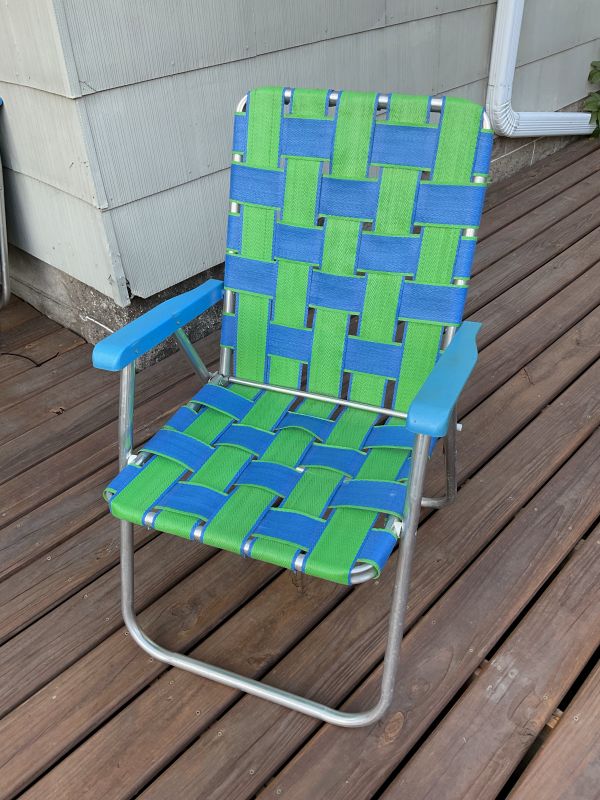When I scored a free Acapulco chair on Craigslist, I didn’t know what it was called. So, I couldn’t easily find a tutorial to help me fix it. It was a good case for using the reverse image lookup on Google. Once I had the right search term, I could find some instructions for re-webbing the chair. The best ones I found were in Spanish and were clear enough for this non-Spanish speaking person. The worst tutorials touched on a pet peeve: time lapsed videos without any verbal instructions.
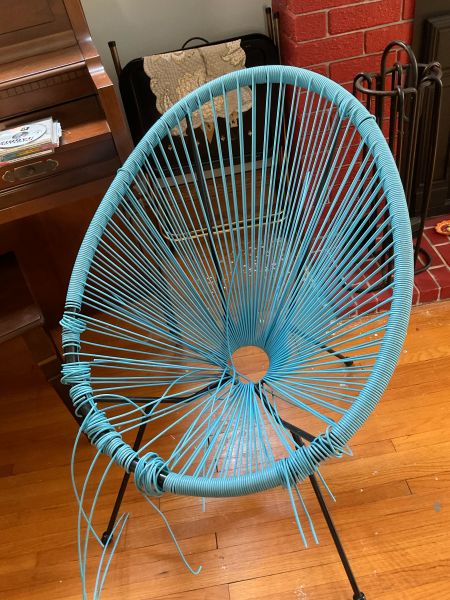
Given how I’ve been weaving seats onto other chairs where I was crocheting craft cord onto the frame, I wondered if I could do something like the chair my neighbor saw. Here’s the picture that Jill sent to me:
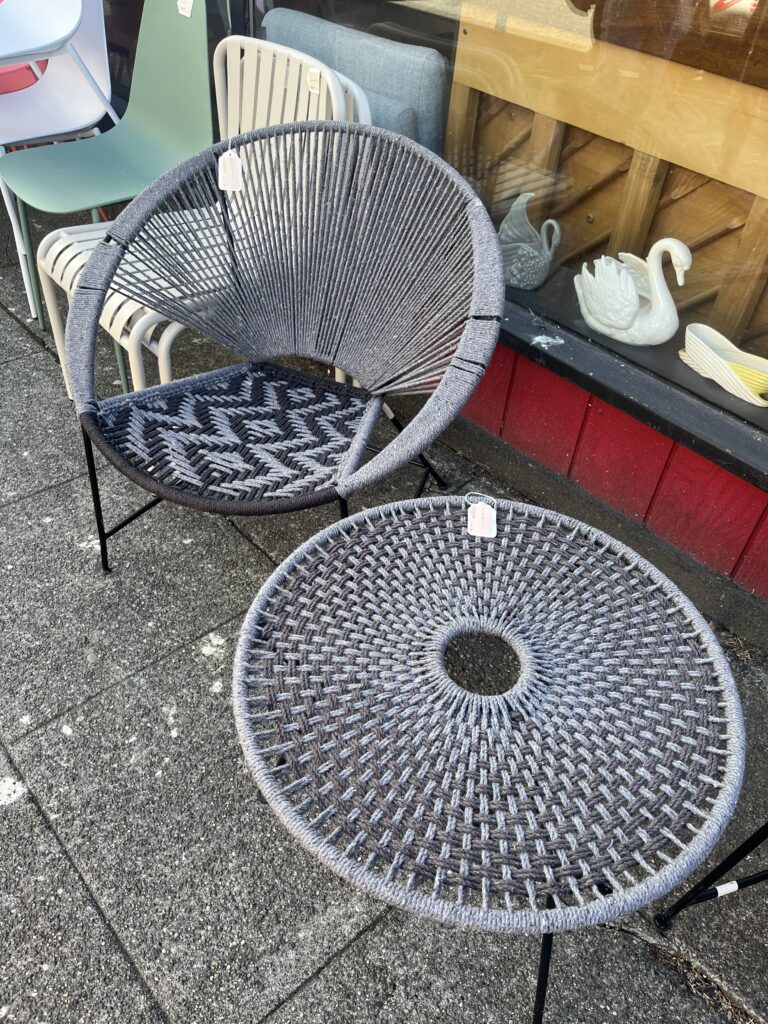
After some trial and error, here’s what I did:
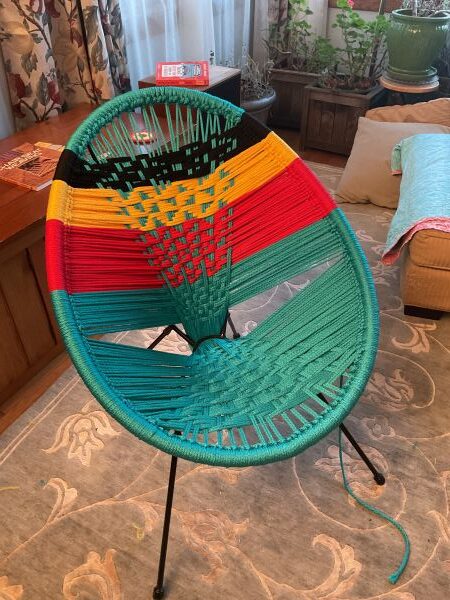
The trick was to figure out how to keep the back of the chair from resting on the frame, which would have been uncomfortable.
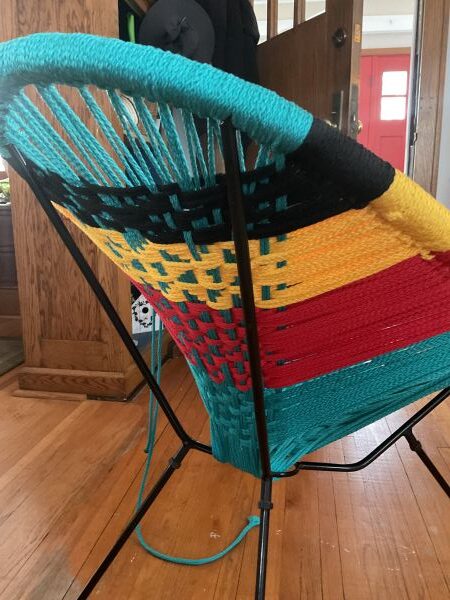
The solution was to start with a horizontal “bridge” that would hold vertical strings up off the frame. In this case, it is the black band of color on the chair. I made a guess as to the best position for the bridge. But I wouldn’t know if I got it right until I could sit on it.
After the bridge was in place, I added the turquoise vertical strings. This required making spaces between the crochet knots along the frame because 1) the bottom of the chair was wider than the top of the chair, and 2) all the strings travel through a center hole with limited space. Though I tried to do the math and sketch this out on paper, figuring out how many and where to put the spaces took a few tries. Once I figured out how to do half of it, I could mirror the pattern on the other side. In the end, I was able to fit 20 vertical strings onto the chair, which was plenty.
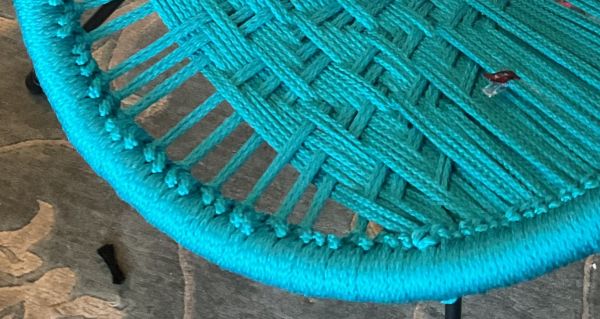
Making the spaces between the knots wasn’t hard. But it’s like a lot of things. If you’re out of practice, you can forget what you did. The tip that I would give to my future self would be to check to make sure that everything is in the normal position to start another loop once you’ve made your extra space (or two, or three). Another way to think of it is that a “space” is a knot that doesn’t have a string associated with it. This needs to be a full knot. If you make a half knot, then your string will not drape over the top of the bar in the ready position to make the next loop. And yet another way to see it is that you’re going through the same motions of making a loop around the top of the chair, except you don’t actually go around the top of the chair.
The final step was to weave in the remaining horizontal strings, in this case the yellow, red, and turquoise under the black on the back and the turquoise on the seat. This was a matter of making sure that both the back of the chair and the seat had enough room on the arms for the loops. To make everything meet up just right in the middle, I worked each side together.
If you are trying to weave a chair like this and you have questions, let me know. My basic advice would be to start by weaving a standard lawn chair first.
